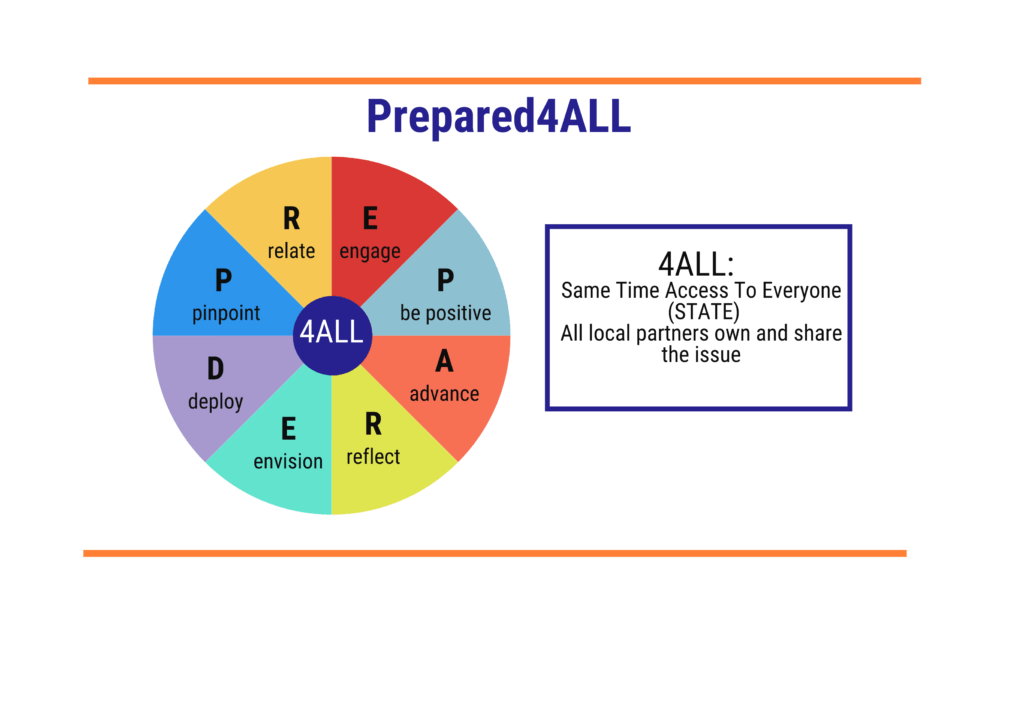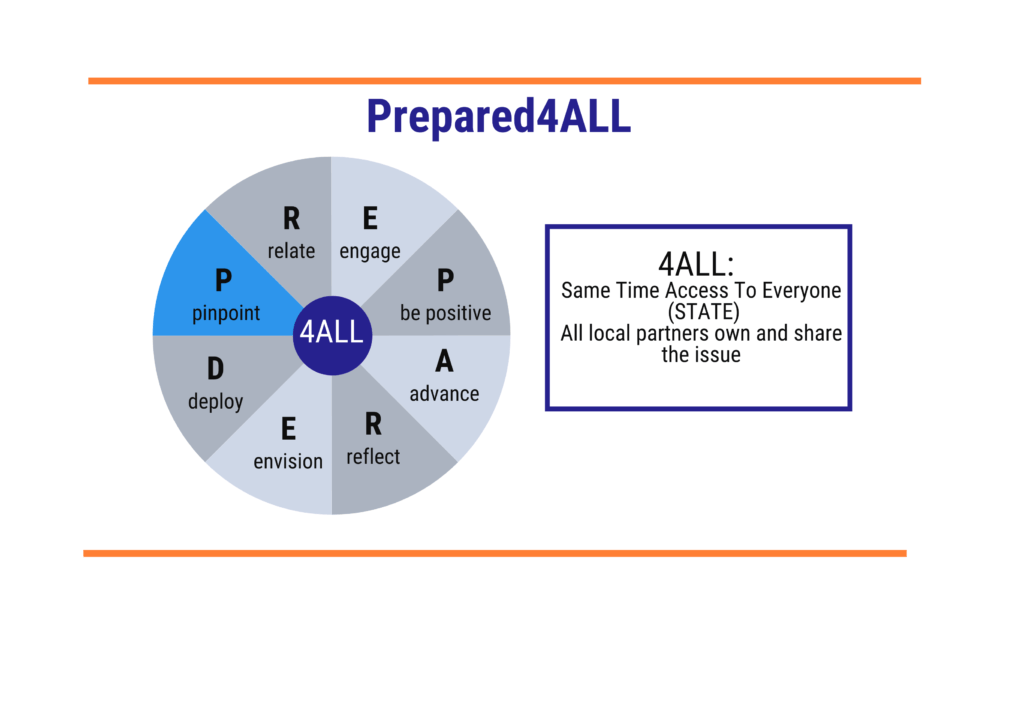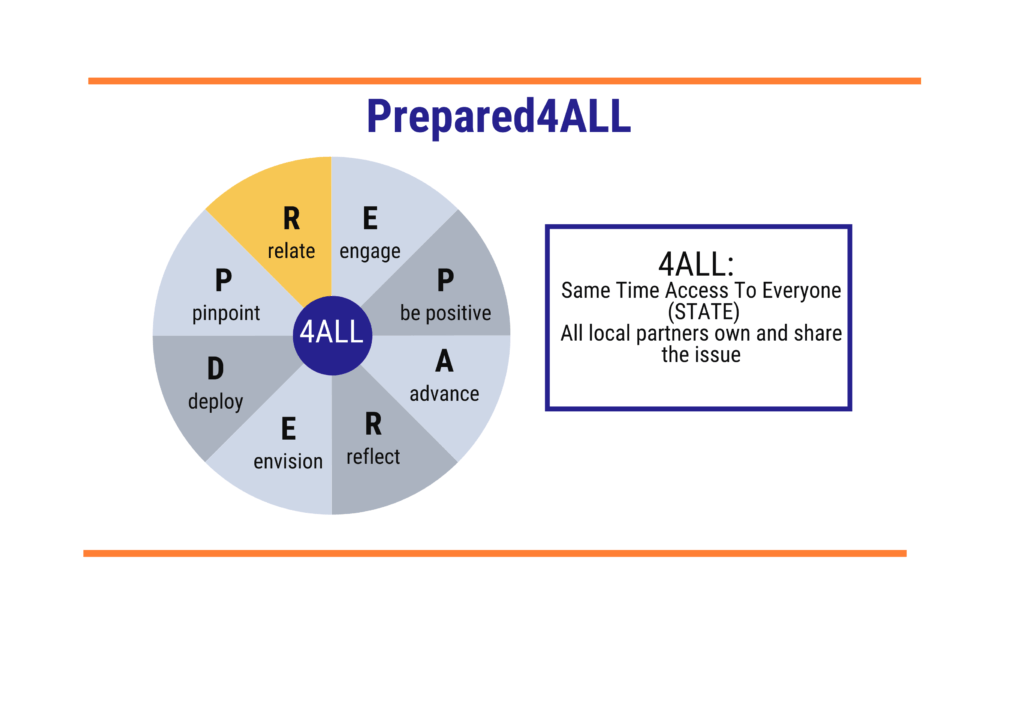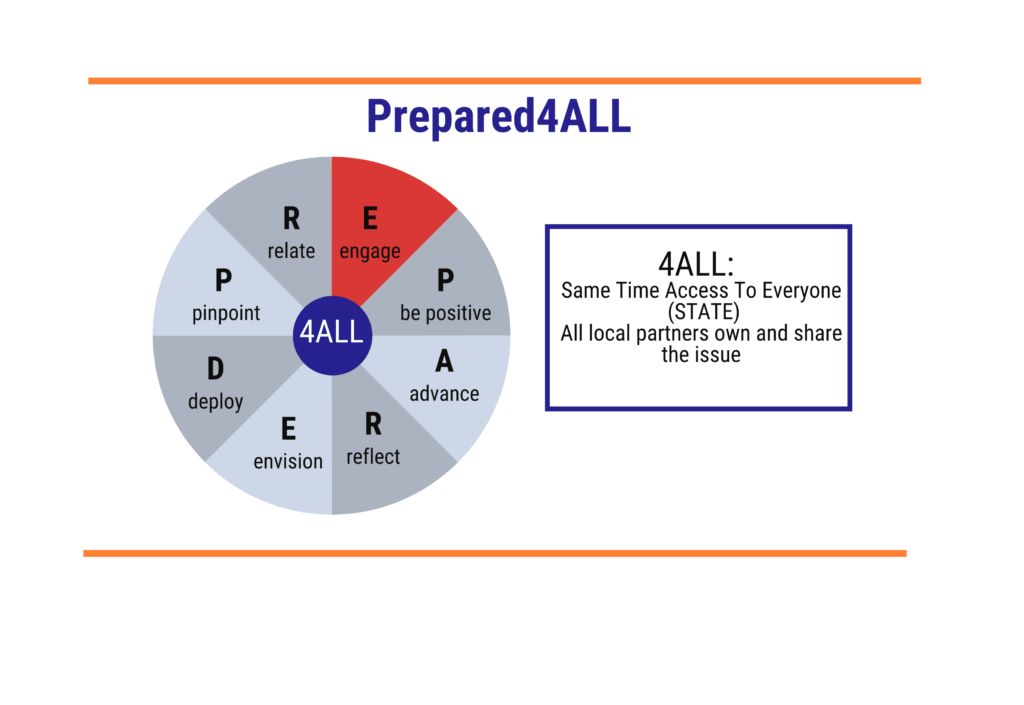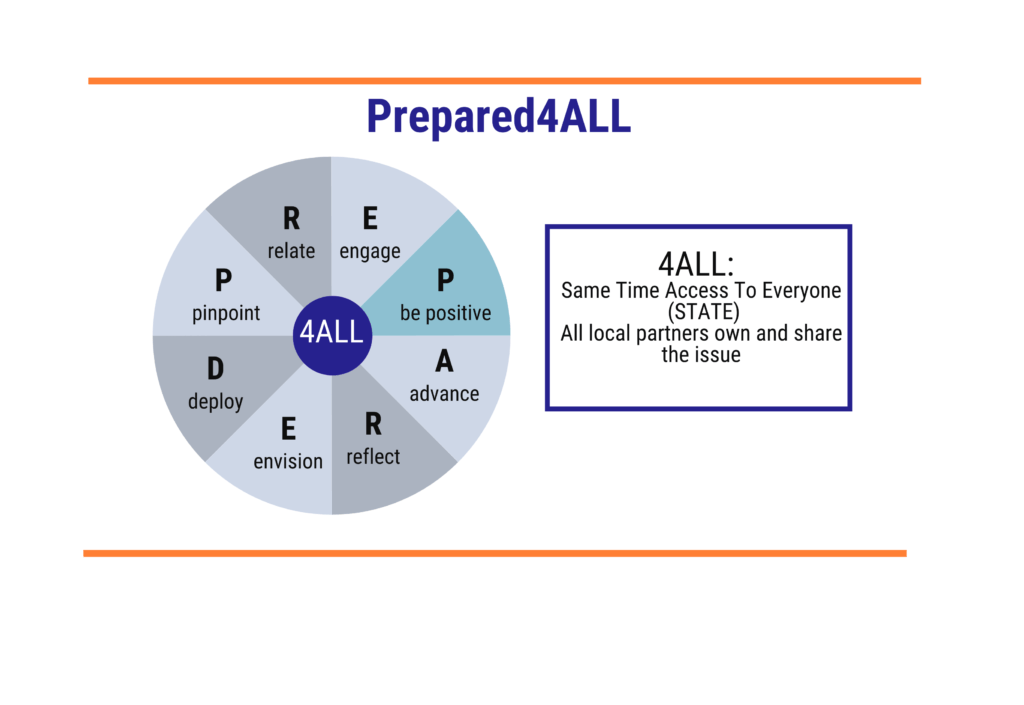Being Prepared4ALL _review
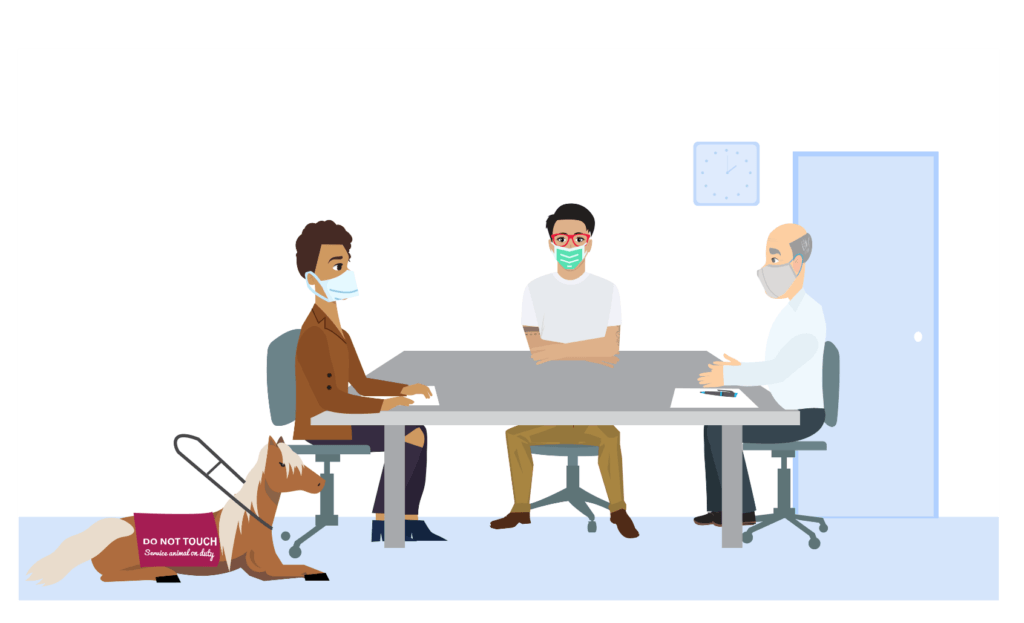
It may not look like it but the people in this room are socially distanced. There is an American Sign Language (ASL) Interpreter in this room to sign for anyone who needs it.
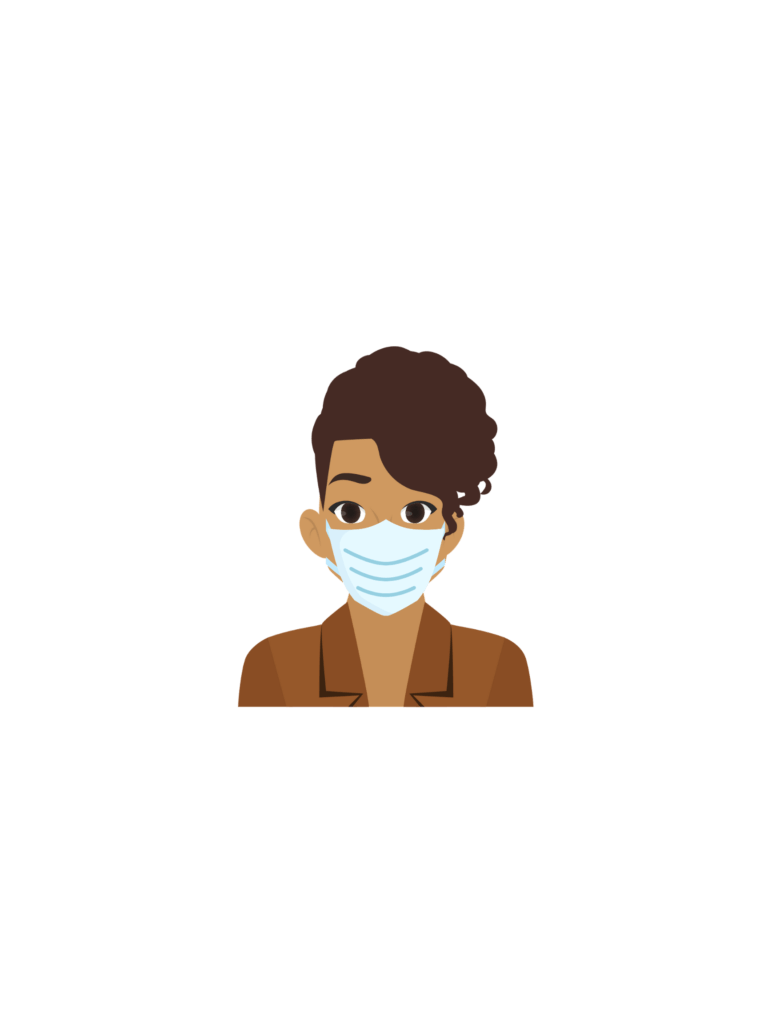
Carrie: We’ve already talked about fostering sustainable community partnerships with our whole community approach. What I like is that we already have several strategies our Team uses. Think about Community Stakeholder Meetings, the Prepared4ALL process and our Prepared4ALL Action Teams.
Through the Prepared4ALL process we collaborate with local emergency and public health preparedness planners. We follow a whole community approach and overcome obstacles along the way.
We’ll talk in detail about whole community planning on a later visit.
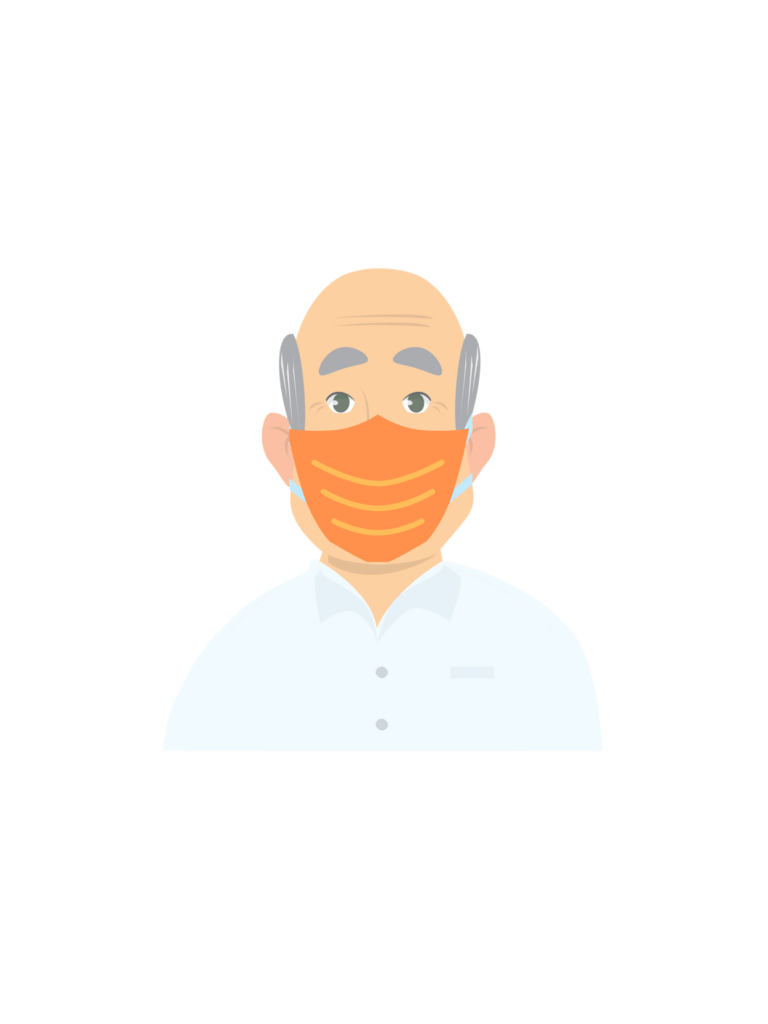
EM: We host Community Stakeholder Meetings to bring the local community together. People who attend these meetings might be:
-Local residents who represent our community’s diversity, like people with disabilities and others
–Business people
-Community organization representatives like people from disability organizations
At the meetings we:
– Identify disability-related gaps and areas of strength in the local emergency plan
– Decide on gap closing priorities
– Create an action plan with strategies to close those gaps
At a later visit we’ll show you the Active Planning Workbook and you can watch a Community Stakeholder Meeting.
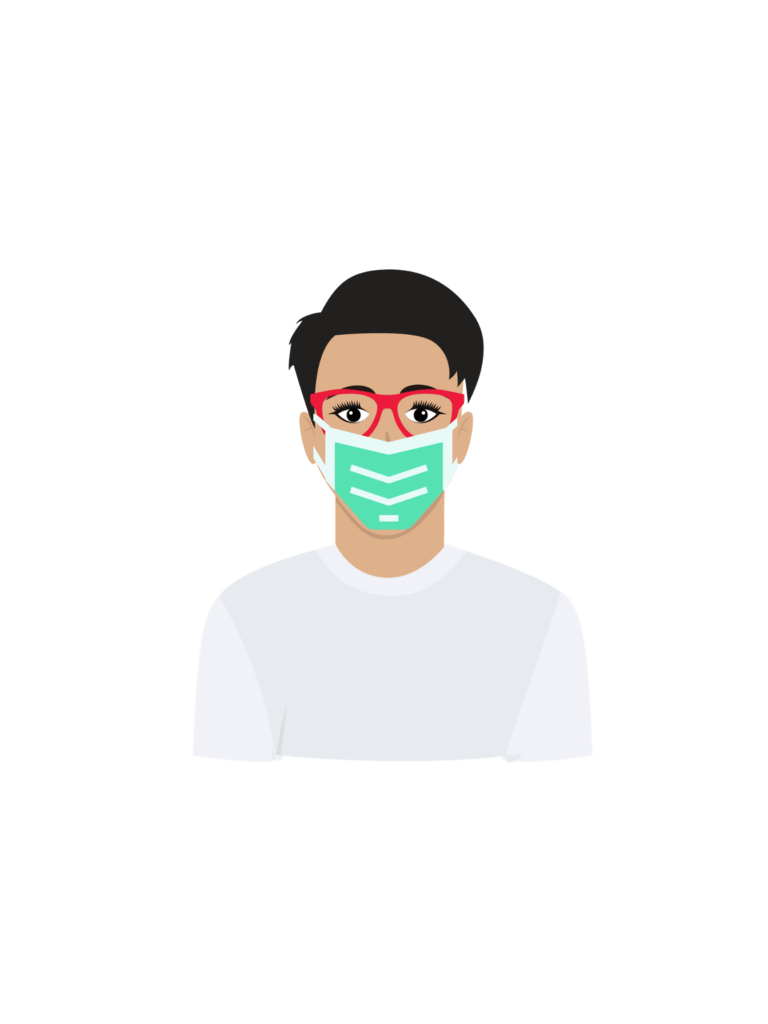
PJ : Our Prepared4ALL Action Team is also important. The Team includes people with disabilities, disability organization representatives, family members and other allies, caregivers, community-based organizations, and disaster volunteers.
The Team has learned about the local emergency planning process. They help make sure we hold accessible and inclusive meetings and create plain-language documents. They let their networks know about the importance of being prepared and participate in local emergency drills. Of course, they also join Community Stakeholder Meetings.
Our Prepared4ALL process guides the meetings and the Action Team’s efforts.

EM: We didn’t just make up Prepared4ALL, you know. It’s based on well-known strategies for building teams. Prepared4ALL boosts collaboration. The process helps us think through emergency planning inclusion and accessibility issues. And helps us not “get stuck.”

PJ: Think about it, Terrye. Have you ever tried to collaborate with someone and gotten stuck?
? Reflect on a time when you ran into a challenge and think about how you became “unstuck.”
PJ’s Response

“Getting stuck” is always a collaboration challenge. Local government officials may tell you, “we don’t have time, we don’t have money, we don’t have the resources” for whole community planning. The Prepared4ALL process can help us become “unstuck” because it offers different ways to look at challenges.

PJ: We use this pinwheel to show the process. As you see, each letter refers to an inclusion and accessibility strategy. Because emergency planning doesn’t always go in a straight line, you can jump into this process at any step. Each step can also be done on its own. But in order to create a well-rounded process, all steps and strategies are usually needed.
Let’s go through each step. Then think about how to use the steps to collaborate with local planners. We’ll use COVID-19 testing as an example.
Before we can begin doing work in our local community, we first need to Pinpoint the issue and our potential partners.
Pinpoint
– We pinpoint the local disability inclusion issue. Understand how many people who have a disability are in your local community. Everyone has needs in an emergency. You need to know the needs that people with disabilities may have.
– Pinpoint where local emergency management and public health organizations are located and how to contact them. Each community runs its emergency planning and public health preparedness departments differently. It’s important to learn how your local community operates. (On a later visit you’ll learn more about these local government departments.)
Think about inclusion and access issues related to local COVID-19 testing. What are some key Pinpoint issues to think about?
– What is the COVID-19 rate in our community?
– Does the testing plan include an accessible COVID-19 test site?
– Do testing messages include disability-specific information like how to find the test center’s accessible entrance?
– Is there a plan to offer reasonable disability accommodations at the test center?
– Does the plan identify someone with knowledge/expertise about the disability community to answer questions?
– What is the state COVID-19 rate?
– Is there a way for the public to give input about COVID testing plan gaps?
Feedback
The Pinpoint questions relate to the specific access and inclusion issue at hand. While it’s important to know the state and local COVID-19 rates, these issues don’t necessarily relate to testing access and inclusion.
The R in Prepared4ALL is to remind you to Relate your work to efforts of partners.
Relate
Find local organizations with related or similar goals as your organization. These are the organizations that are more likely to see how including a disability point of view in local emergency planning links to their own organization’s mission and work.
Think about local organizations to engage with. Which ones might have an interest in COVID-19 testing for individuals with disabilities?
– Group homes
– Food pantries
– Houses of Worship
– School district special education parent advisory group
– Visiting Nurse Association
– Local Center for Independent Living (CIL)
– Local chapter of the American Heart Association
– Organizations that provide home and community-based services to individuals with disabilities
Feedback
A diverse group will be stronger and may bring new ideas to the table. Food pantries and houses of worship may seem like unlikely allies. Food pantries serve individuals with a range of needs.
Houses of worship often have community volunteer groups. These groups might be interested in supporting community collaborations.
Disability advocacy organizations, like Independent Living Centers, have a natural interest in COVID-19 testing for people they serve.
Parents of children with disabilities may be able to enlist school system support. Visiting nurses, who provide services to some people with disabilities, are also natural allies.
Health-focused organizations, like the American Heart Association, can also be strong allies wit diverse networks.
Next, the E stands for Engage to remind us to connect and collaborate with partners.
Engage
Along with your local partner organizations, engage the local emergency management and public health department. Ask for a meeting.
Show your interest in the work of public health planners and the work of emergency planning and say what your organization can offer to them.
In conversations and at a meeting you might:
– Share information about the disability community
– Ask about the ways that the local emergency plan includes people with disabilities, like accessible COVID-19 testing sites
– Discuss ways you might help connect them to the disability community
– Help identify accessible communication resources like sign language interpreters or closed captioning services
The P is all about being Positive, which means focusing on our strengths and opportunities.
Be Positive
– Focus on what you can do and with what you have, not what you can’t do or don’t have
– Identify and appreciate strengths that an organization has right now, like environment, community, partnerships, personnel and their skills, and resources
– Identify ways to fill in gaps based on past successes and current strengths.
? Think about your organization’s strengths. What could your organization offer local planners that builds on what you already do well and resources you have? What is a part of the work you already do that you can use in emergency preparedness efforts?
Feedback
Here are some examples of potential strengths:
– Connections to local disability advocacy organizations and health promotion programs in the community
– Accessible space for meetings and training (assuming it is safe to hold in-person meetings)
– Information about remote Communication Access Real-Time Translation (CART), language translation apps, qualified American Sign Language (ASL) interpreters, site signage and document review by people with disabilities.
– Participation in a virtual or in-person COVID-19 test or vaccine site accessibility review
– Access to the opinions and lived experiences of people with disabilities
– Review test site signage and instructions, making sure people with lived experience review messages.
– Offer to review disability-related questions at the testing site and give advice on how to best serve people who have a disability
We’re always looking for ways to keep up the good work of including people with disabilities in emergency preparedness. In other words, we Advance opportunities.
Advance Opportunities
– Make the most of timing and opportunities. Engage in September Emergency Awareness Month, COVID-19 testing campaigns, or participate in existing emergency preparedness community exercises or health fairs.
– While this may be challenging during the COVID-19 pandemic, there may still be opportunities. For example, maybe your organization could add information about COVID-19 testing to a monthly email newsletter.
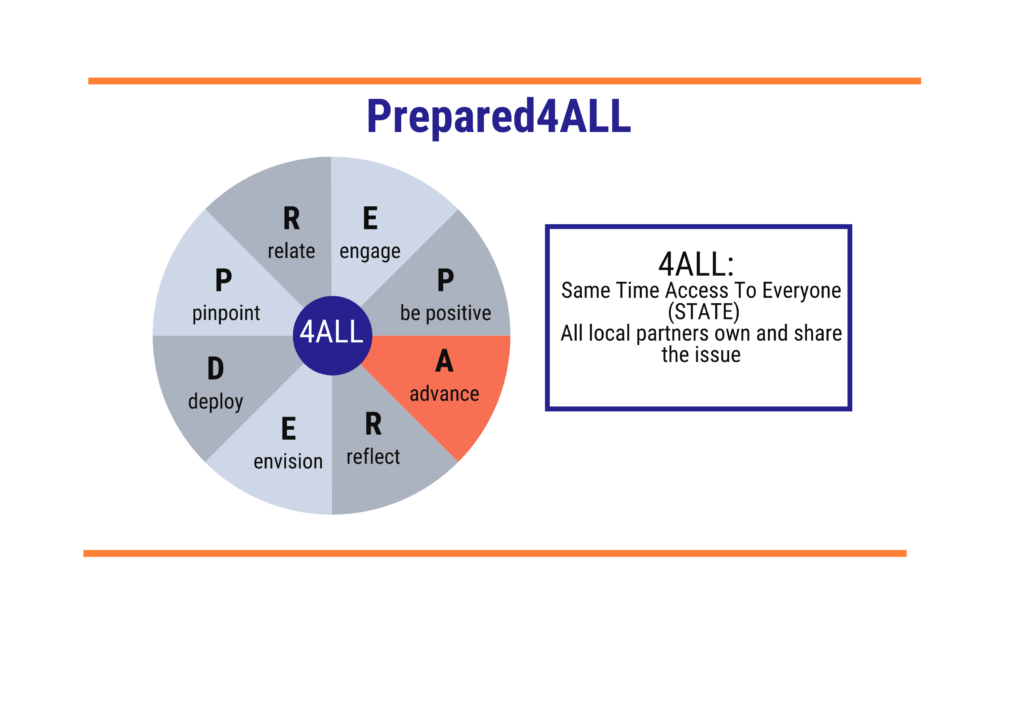
It’s important to periodically stop and Reflect on what you are doing and about what you want to happen in the future.
Reflect
– Take time to stop and think about your work as you move forward. Identify successes and areas for improvement.
– For example, while working with local planners and collaborating organizations, think about what your organization has learned about COVID-19 testing. Share what you learned.
– After COVID-19 testing reflect with partners about lessons learned.
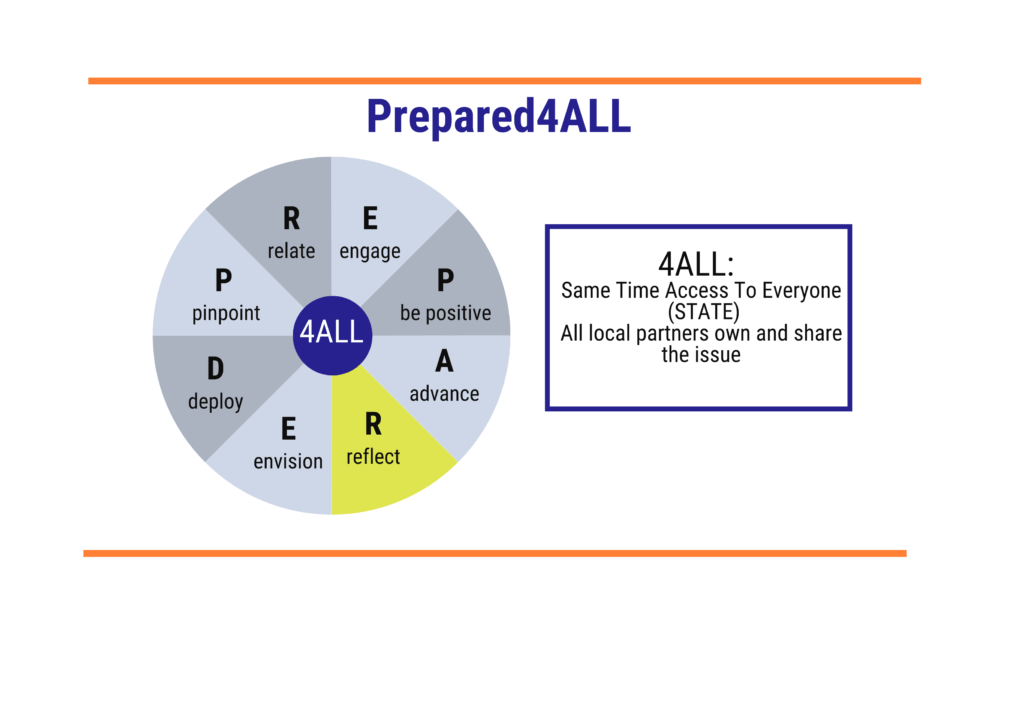
Fostering success with partners involves Envisioning where you want to go and what your journey will look like.
Envision
– Think about organization strengths and what success looks like. What would a successful process built on organizational strengths look like?
– Create a flexible plan to move forward. Innovate, try out strategies and change them if they don’t work.
– For example, if asked for input about potential communication issues related to COVID-19 testing, brainstorm the possibilities with collaborators.
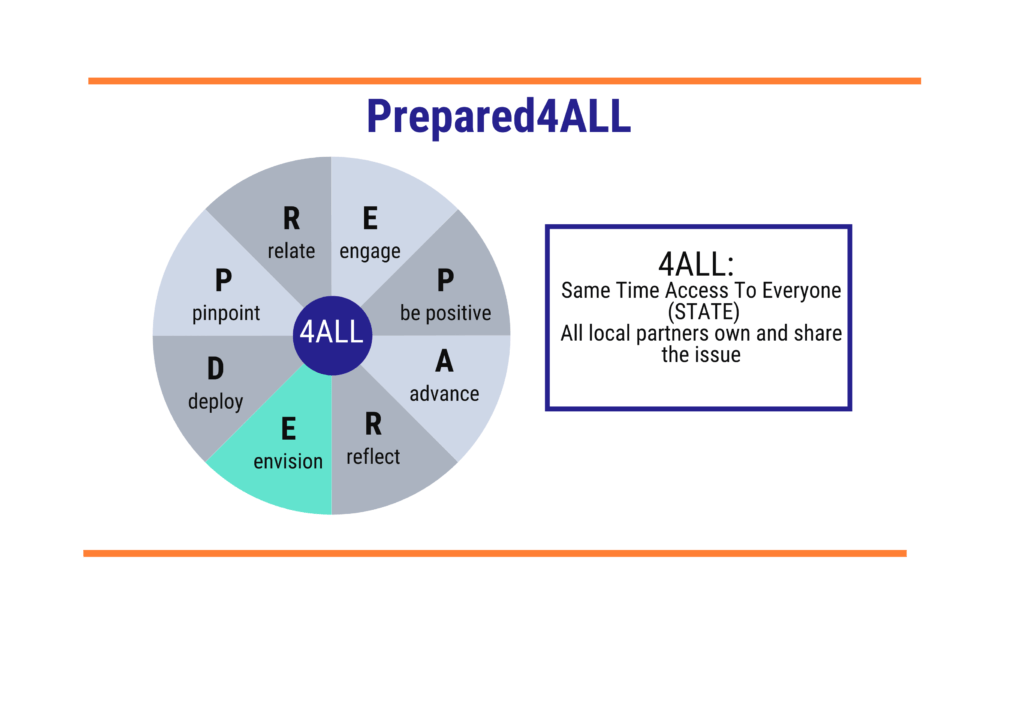
? What communication issues do you think might arise about COVID-19 testing? What would a successful path to work through these issues look like?
Feedback
Examples of potential communication issues are:
– COVID-19 testing public health messaging: Is there a public health communication plan to address COVID-19 testing? Have native speakers reviewed non-English language communications? Have people who read plain language text reviewed the plain language version? How could collaboration solve the challenge?
– Consent forms: Are the consent forms available in alternative formats such as large print, Braille, on a computer with screen reader software, in plain language? How could collaboration solve the challenge?
– Are there signature guides available for the consent forms? (Signature guides are sometimes used by people who are Blind or have low vision.) How could collaboration solve the challenge?
– Test Results: How and when will test results be communicated? How could collaboration solve the challenge?
–Is there a plan if someone needs additional time to preview the test, or wants to see the nasal swab and ask questions about it? How could collaboration solve the challenge?
Now, the D stands for Deploy – that’s when you make your plan a reality.
Deploy
– Put your plan into action.
– Revisit past steps if needed to reflect, reframe thinking, or make necessary revisions. Then deploy a revised plan.
– After successful COVID-19 testing, work with local planners on the community After Action Report. What were lessons learned? What went well? What could be improved?
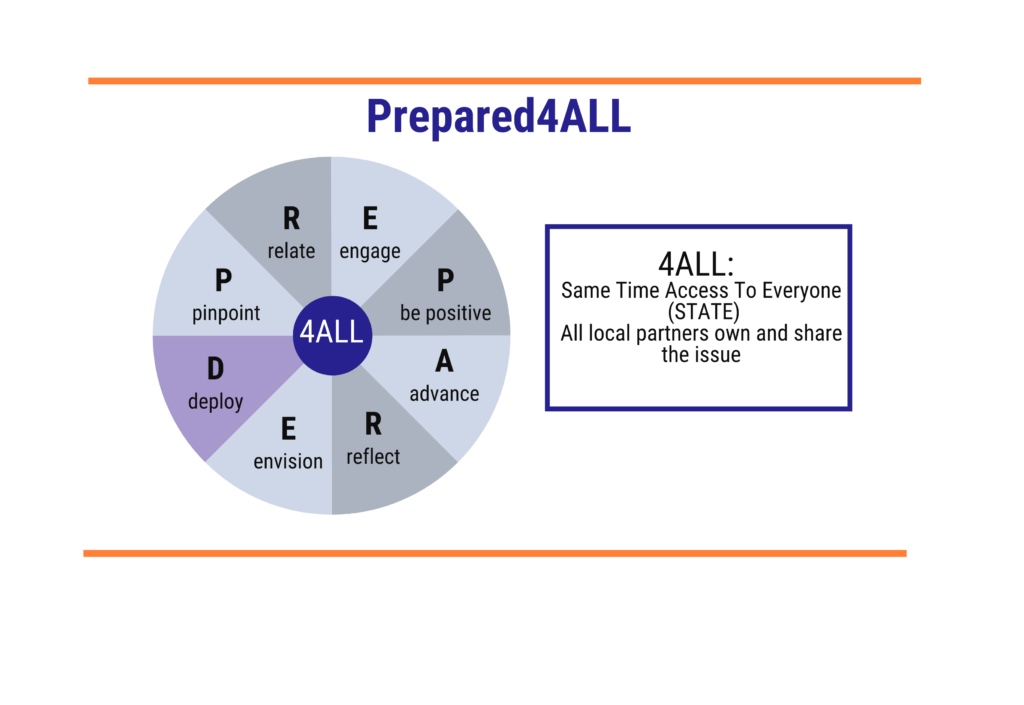
Don’t forget about the 4ALL piece. To us, being “4ALL” includes two things:
4ALL
1. Same Time Access To Everyone (STATE)
All emergency and public health information needs to be created in an accessible way which everyone can use and understand at the same time. This means that things like resources, emergency alerts, and news bulletins are offered in multiple formats and written in plain language.
2. All local partners own and share the issue of emergency preparedness.
This is important to prevent silos. When organizations or individuals don’t work together on emergency planning, there can be miscommunication and planning gaps. If everyone understands that emergency planning is their arena, they’ll work better together and support each other’s efforts.

EM: In planning for a COVID-19 testing site, remember STATE when thinking about messaging. Remember that being Prepared4ALL means collaboration.
Click the quiz link below to check your learning and continue.

